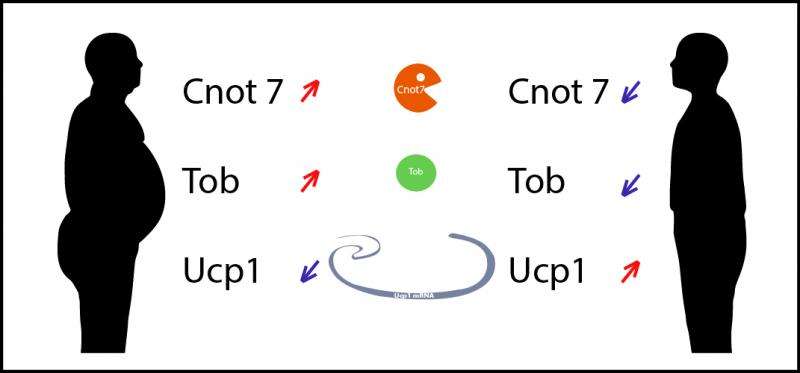Good news for feast lovers? Obesity-promoting genes discovered

Ever imagined you could eat all the mouthwatering, festive food during winter holidays and never worry about an expanding waistline?
For many people throughout the world, being overweight or worse still, obese, is a major health concern, putting them at risk for high blood pressure, heart disease, cancer and other health conditions. Although, there is an urgent need to cure obesity, no safe and effective medical treatment is available, and countermeasures are limited to individual efforts, such as sticking to a healthy lifestyle and dietary restrictions. Scientists at the Okinawa Institute of Science and Technology Graduate University (OIST) have analyzed the causes of obesity at the genetic level and have discovered one of the molecular mechanisms involved in storing and burning fat. These findings by Dr Takahashi Akinori and his colleagues of the OIST Cell Signaling Unit are published in the December 29, 2015 issue of the journal, Cell Reports.
The OIST team discovered that mice lacking 2 genes, Cnot7 and Tob, remain lean even after eating a high-fat diet. Scientists examined the fat tissue of these mice and found that the secret of their slender waistlines lies in the increased expression of another gene called Ucp1. Ucp1 helps to reduce fat deposits by converting fat stored in fat cells into heat. It is well known that obese people and obese mice have low concentrations of Ucp1 in their fat cells, so they are prone to store fat rather than burn it off.
OIST scientists found how Cnot7, Tob, and Ucp1 are functionally related. In order to supply the fat cells with functional Ucp1 protein, the Ucp1 gene has to be transcribed into another molecule called messenger RNA, or mRNA. The stability of Ucp1 mRNA is important to control the total amount of Ucp1 available in the cell, and ultimately, the destiny of stored fat. In obese mice, Cnot7 and Tob degrade Ucp1 mRNA, so that it can no longer be used to make Ucp1 protein. While previous studies on obesity focused on synthesis of Ucp1 mRNA, this research clarified the mechanism of Ucp1 mRNA degradation. Mice lacking Cnot7 and Tob have more stable Ucp1 mRNA and more Ucp1 protein. Therefore their fat is burned and they do not become obese even on a high-fat diet. On the other hand, mice and people with unstable Ucp1 mRNA are prone to become fat, since the fat-burning function of Ucp1 is compromised.
The OIST team is interested in advancing this research to the next step. "We wish to inhibit the pathway that suppresses the conversion of fat into heat. Being able to enhance fat burning could have clinical applications, such as the production of anti-obesity drugs," explains Dr Takahashi.
More information: Post-Transcriptional Stabilization of Ucp1 mRNA Protects Mice from Diet-Induced Obesity, Cell Reports, 2015.



















